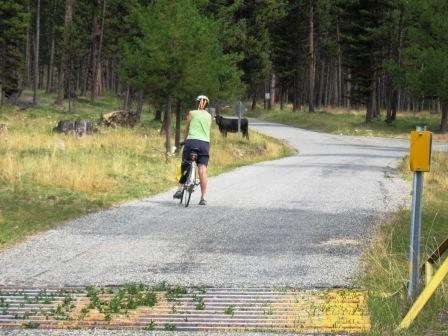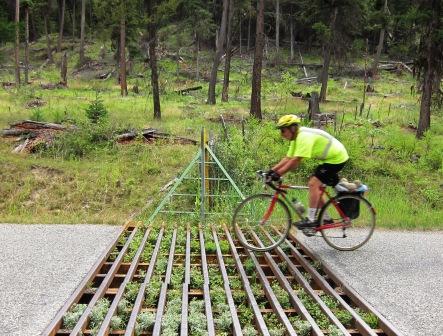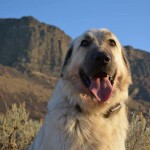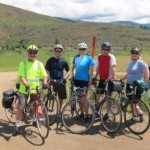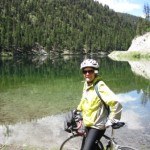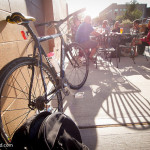Riding rural roads that travel through national forests and over range country managed by the Bureau of Land Management has its pluses: low vehicle traffic, great scenery, solitude, and potential wildlife sightings, to name a few. There are also a few drawbacks: road surfaces can vary from blacktop (rare) to chipseal to dirt and gravel, drinking water can be scarce, and you need to be aware of cattle guards.
A cattle guard is a grid of parallel metal bars placed across a road to prevent livestock from crossing it, but allowing vehicles and pedestrians through. It can be intimidating for bicyclists, but most cattle guards can be crossed safely.
I’ve had the pleasure of biking in the Okanogan Highlands of north central Washington. This sparsely populated region of our state offers miles of quiet roads that roll through piney woods and cedar groves, and across rocky grazing ranges for cattle and other livestock. I saw soaring raptors, heard the haunting call of loons, watched voles scurry by, and delighted in the yips and howls of coyotes. And yes, I had to pedal over cattle guards–multiple times.
Here are a few tips for crossing cattle guards on a bike:
- Ride over the bars in a perpendicular (right angle) direction! Riding at any other angle might snag your wheel in a gap and cause you to crash.
- Ride with some speed and hold the handlebar firmly. You will experience less shakes, rattles and jolts with a little speed.
- Stop pedaling and rise out of the saddle as you cross the cattle guard. Use your knees and elbows as shock absorbers.
- Don’t ride across a grate if you see that the gaps are parallel to your direction of travel! Some cattle guards are installed in this fashion.
- When in doubt, dismount and walk!
